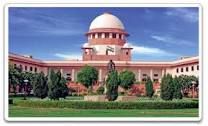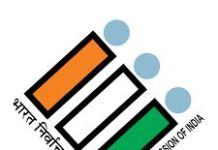The Supreme Court Committee report and the Adani group
The key findings of the committee appointed by the Supreme Court order dated March 2, 2023, are finally in public domain.
The report confirms some of the allegations made in the Hindenburg report. But it also debunks many of the allegations as well.
The report does confirm that there indeed were some entities that had taken short positions prior to the Hindenburg Report and profited after the price crashed upon the publication of the Report on Jan 24. It similarly does record that there was some “suspicious trading” on the part of six entities. Four of them were FPIs (foreign portfolio investors), one was a body corporate, and one was an individual. It states that the trading pattern by the FPIs was suspicious because of the build-up of short positions before the Hindenburg report.
But the report also underscores the various mitigating measures undertaken by Adani Group to bring down debt and build investor confidence. It points out how the Adani group did its best to pare down the debt secured by encumbrances on their shareholding. The group infused fresh investment into Adani stocks by pumping in almost USD 2 billion by a private equity investor and the like, built confidence in the stocks. It pared down some projects from its list, and reinforced its commitment to others.
The Committee also concluded that based on empirical evidence that the Indian market as a whole was not unduly volatile during the period under reference. The volatility in the Adani stocks was indeed high, which is attributable to the publication of the Hindenburg Report and its consequences.
But beyond the findings of the committee, there are sub-texts that most people often overlook.
The first is that contrary to charges that Indian money was siphoned out of the country, the Adani group has brought money into India to finance its forays into infrastructure which India desperately requires. Most people forget that this was done without incurring any time and cost overruns, which by itself is an amazing performance record in a country like India.
There is a second point that people often overlook. Unlike many promoters, the Adani Group has not funnelled money raised from the public into building private islands of luxury and pomp. There have been no signature luxury villas in esoteric countries. No purchases of luxury yachts. There has hardly ben any ostentatious expenditure of foreign jaunts for members of family and friends.
This frugality is noteworthy because of two reasons. First, the group has not tried to profit itself. Second, the group has focussed on channelling all the funds into hard assets and projects. There is hardly a single asset which has not been put to profitable use. There are no projects that have been funded because of sentiment or as demonstrations of vanity.
That is why, while many of the promoters in the past collapsed when the tide went against them, the Adani group has survived.
There is a third message that many investors have overlooked. At a time when almost every major business group has been shedding workforce in India and overseas, the Adani group has nurtured its employees, partly because it wants to nurture the talent it needs for further expansion, and partly because the group has continued to row. Even post Hindenburg, the group has acquired at least one more port, and has continued to build projects in and outside of India.
Finally, many people forget that it is not easy being a first-generation entrepreneur in India especially in this decade. The earliest business groups in India grew when there were no environment, funds-flow, or major regulatory barriers.
Crowd sourcing was a respectable way of raising funds. Nor was raising deposits. That helped TMA Pai build one of the largest banks in India by garnering just 25 paise deposits – mostly through rural folk. If Indira Gandhi talked about rural empowerment being the principal reason for nationalising banks, she forgot that Syndicate Bank, which TMA Pai built, was already a bank headquartered in rural India, and catering largely to rural prosperity.
In the past, money could be raised even through questionable (though not illegal) trading in narcotic products. This was even true of big players like David Sassoon who was a major trader in opium, and who donated much of his wealth to developing Mumbai. He had 17 textile mills, and employed almost 60% of Mumbai’s population. He built one of the finest ports in India during his times, which then became a template for the British to build their future ports. But without those funds, Mumbai would not have become the financial capital of India.
Dorab Tata could get a prospecting licence for iron ore, and once he had discovered it, could develop his coal and iron ore mines without much difficulty.
None of these is easy to replicate today. Regulations, corruption, and vexatious litigation have smothered many a would-be entrepreneur. The fact that Gautam Adani could overcome these, notwithstanding the technical violations highlighted by the Supreme Court Committee, is immensely commendable. That Adani could do so without getting involved in scams that afflicted coal and telecom bandwidth is doubly commendable.
India would not have been able to grow during these turbulent times without such commitment to infrastructure growth, project implementation and refusal to divert funds into vanity projects of personal aggrandisement or luxury.
It is these sub-texts that people must pay heed to. Because these capabilities are what India needs.










































COMMENTS